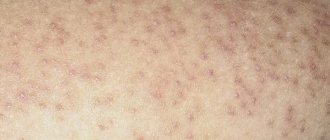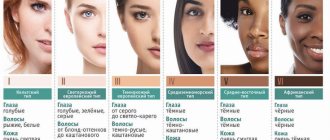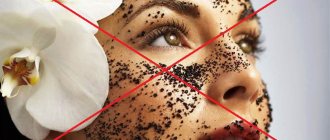This aesthetic problem has many names: menopausal hump, cervical hump, widow's hump, buffalo hump, buffalo horn. Based on the variety of names, it is clear that, unfortunately, this pathology is familiar to many.
Widow's hump most often occurs in women over 40 years of age, although cases of pathology developing in men and even teenagers are not uncommon. What factors contribute to the development of menopausal hump, who is at risk and what are the most effective treatment methods used today in plastic surgery. Read about this in the article.
What is widow's hump?
The menopausal hump is essentially a “fat trap.” In medical terms, this is a local deposition of adipose tissue in the area of the 7th cervical vertebra, which is characterized by excessive external protrusion. It is in this area that the mobile cervical spine transitions into the stationary thoracic spine.
Fat cells quickly accumulate in areas of least mobility. One of the “weakest” places is the neck.
The roller deforms the vertebrae, posture changes, and the skeletal bones weaken. The widow's hump gradually increases in size, and blood circulation in the skin at the site of its formation worsens, which in turn affects the nutrition of brain cells. Patients with this problem report frequent headaches, dizziness, and insomnia. So this is not only an aesthetic problem, but also a medical one. It is worth noting that the accumulation of fat cells in this area does not decrease even with serious weight loss.
Aids
- A massager in the form of a roller and other forms is an additional method of dealing with a bump. Using self-massage, you will feel a pleasant burning sensation that will last about 30 minutes. This is great because it means the blood supply is being activated.
- The patch with pepper has an effect that distracts from muscle strain, and the budget price of the patch cannot but attract. It drives blood and accelerates the movement of lymph.
- Bath with fragrant brooms. Steam the vertebrae, continuing to gently massage them to prevent displacement. This will not only help with the withers, but will also raise the overall tone of the body and improve the condition of the skin.
- In extreme cases, the patient may undergo surgery - liposuction.
Why does a widow's hump appear on the neck?
The following factors lead to the appearance of this pathology:
- excessive accumulation of fat mass – that is, excess body weight and redistribution of adipose tissue. In obese people prone to obesity, the growth appears faster;
- hormonal imbalance;
- menopause in women;
- sedentary lifestyle;
- vertebral injury;
- degenerative-dystrophic or infectious-inflammatory diseases (syphilis, tuberculosis);
- salt deposits in the vertebrae (Bechterew's disease);
- chronic stress;
- frequent use of gadgets.
For the development of a menopausal hump on the neck, either one of the above factors or several of them at the same time is sufficient. The effectiveness of its treatment depends on the exact determination of the reasons for the appearance of this formation.
At-risk groups
As has already been written, women over 40 are more prone to developing a cervical hump. Based on practice, these are people who are overweight and lead a sedentary lifestyle. At risk: office employees, accountants, cashiers. By the way, in modern realities, the menopausal hump is popularly called “accountant’s withers.”
The next risk group is women during menopause. At this time, hormonal changes occur in a woman’s body. The production of estrogens (female sex hormones) stops, which slows down fat and mineral metabolism. Note that estrogen supports the function of the reproductive system. If a woman does not have an intimate life or has very little sex, then estrogen “works” on the accumulation of adipose tissue. And as a result, increased deposition of fat according to the “male type” is provoked - in the areas of the neck, shoulders, and back.
Also at risk are people who have a genetic predisposition to cervical hump. If your mother or grandmother had this problem, then it is highly likely that you will have it too.
People with concomitant chronic diseases - osteoporosis and cervical osteochondrosis - suffer from menopausal hump. In the first case - with osteoporosis - there is a lack of calcium in the bones, so the cervical and thoracic spine are deformed. In the second case - with cervical osteochondrosis - there is a deposition of salts, which often causes the appearance of a fatty roll.
Unfortunately, a hump on the neck can also appear in athletes due to hardening of the skeletal muscles due to increased physical activity.
Massage of the cervical-collar area with vacuum cups
You can increase the rate of breakdown of fat deposits and cause blood flow using the reduced pressure that is created when using pharmaceutical mini-cups. Round or oval devices are applied pointwise to the skin to help provide a beneficial vacuum cupping massage in the collar area and neck. The therapeutic effect is combined with a pleasant tactile contact caused by a slight pulling of the skin, which is reminiscent of a gentle grip of muscle tissue with the fingers of a massage therapist.
TYPES OF CUP USED AND PREPARATION FOR SHVZ MASSAGE
The most convenient products are plastic or glass jars of reduced diameter (the packaging says “for cervical massage”). They are already equipped with a rubber bulb that helps create a vacuum inside the vessel.
It is more difficult to use solid glass options: they must be periodically exposed to flame to create a vacuum. You need to repeat the warming up each time after the can is detached from the skin.
Products with a built-in supercharger are also inconvenient, since movement is complicated by the presence of an attached pump.
Massage experts recommend starting cupping treatment only after taking a hot bath. During the water procedure, the patient also uses a washcloth, which he uses to rub the area of the PVZ until redness appears. Before performing a massage with a vacuum can, you also need to make sure that there are no scratches or other damage to the skin.
If it is impossible to take a bath, then the session begins with the obligatory rubbing and stroking of the CVZ area.
TECHNIQUES OF MASSAGE OF THE NECK-COLLAR AREA WITH BARS
To provide a therapeutic effect on the neck, shoulders and upper back, only 1 massage jar is used, which actively moves throughout the body. To prevent the product from slipping off the skin, it is necessary to moisturize the skin with cream or oil.
Performing the procedure “from A to Z”:
- Attachment.
Squeezing a plastic jar or bulb with your fingers, the massage therapist applies it to the skin in such a way that it is drawn inward by 1–2 cm. Attention: placing the therapeutic product should not cause pain. - Combination of movements.
The attached jar moves by sliding along the surface of the body. Technique: circular movements performed clockwise are combined with zigzag trajectories. Repeat each technique 5-6 times. - Straight lines.
The movement carried out up and down is carried out with a gradual distance from the spinal column to the edge of the scapula and back. When approaching it as much as possible, the “Arc” technique is performed - moving to another part of the back through the place where the seventh vertebra is located. The number of repetitions is 5–10. - C-shaped trajectory.
The massage therapist, describing the shoulder blades with a cup, performs a movement resembling a semicircle, 3-4 times on each side. - Impact on the withers.
This is where deposits of fat and salt most often accumulate, but by moving the can along the line of an imaginary triangle, with the apex pointing down, you can speed up the breakdown of unwanted substances. - Non-reversible line.
From the area of the head where hair growth ends, the movement of the can begins up to the shoulder joint (3-4 times). - Working out the cervical vertebrae.
Circular movements begin from the last cervical vertebra and rise to the first. Then you need to return to the starting point. - Disconnect.
After performing a massage of the cervical-collar area using cups, they are carefully removed from the skin, which should smoothly straighten. - Strengthening the effect.
In order for the dermis to accept its usual thermal regime, it is necessary to wrap yourself in a blanket for 15 minutes after finishing the massage.
The degree of applied load (intensity of vacuum discharge) should increase gradually - otherwise, light bruises and bruises may appear on unprepared skin. The area of the cervical-collar area of the body that is least sensitive to damage is the surface of the shoulder blades, the most susceptible is the neck.
Important
Vein thrombosis, increased capillary fragility and extensive skin pigmentation are prohibitive conditions for the use of massage cups.
CONCLUSIONS
Acceleration of metabolic processes, lymph outflow, blood flow and oxygen saturation of cells is the result of using vacuum therapy. Anyone can easily learn vacuum massage with a jar, especially if you use the easy-to-learn video, which is located just below.
Widow's hump: prevention and treatment
A good prevention of the development of menopausal hump is regular swimming, gymnastics, and yoga (preferably 2-3 times a week). It is also recommended to sleep on a medium-firm mattress and pillow. If preventive measures have not been taken, and the widow’s hump has already begun to develop, then physical therapy (shock wave therapy, etc.) will help to cope with it in the early stages. In this case, it is better not to use therapeutic massage, as there is an increased growth of the growth after it.
Only plastic surgery can effectively treat a large menopausal hump - it is removed using liposuction. Liposuction is a surgical method for removing excess subcutaneous fat tissue. This operation is a relatively simple surgical procedure and is minimally traumatic for the body.
Modern vacuum liposuction is often performed. It is performed through micro-punctures, so there is no need for stitches. Liposuction is a plastic surgery that can be performed under local anesthesia (feels like being in a dentist's chair). The patient is conscious, but does not feel anything. Since liposuction is an outpatient procedure, hospitalization is not required. In an hour you can go home.
Rehabilitation after liposuction takes 2-3 weeks - during this time, swelling and slight soreness may remain in the place where the widow’s hump was. The result can be assessed no earlier than 1 month after the operation.
Diagnostic methods
Since there are quite a few causes of pathology, you need to be examined by several specialists at once, the main ones being a vertebrologist and a neurologist. A thorough examination will help establish an accurate diagnosis and select the most effective treatment. After the initial examination, radiography or more modern techniques - CT and MRI - are necessarily prescribed. These studies make it possible to identify pathologies of the spinal column and adjacent tissues, recording the slightest deviations from the norm.
The photographs clearly show the slightest changes both in the spine itself and in the adjacent tissues
To identify endocrine and neurological disorders and assess the condition of blood vessels, additional types of hardware and laboratory diagnostics are used. Based on the research results, the doctor selects the optimal treatment option for a particular patient.
Widow's hump in young adults and adolescents
It is generally accepted that a cervical hump appears in older people, but today it has become “younger” - many young people (25-35 years old), as well as teenagers, are faced with this aesthetic defect. There are two reasons: a sedentary lifestyle, as well as a passion for gadgets and computer games. At the same time, many young people spend time on computers and laptops. A constant static position: a tilted head, hunched shoulders, tension in the arms lead to excessive stress on the cervicothoracic region, and as a result, the formation of an unwanted hump.
Widow's hump: psychosomatics
As you know, there is a statement: “all diseases are from nerves,” and psychosomatics is the most powerful thing in the world. Psychological factors also influence the occurrence of a cervical hump.
Based on psychosomatic factors, the neck is the gap between the head and the body, which acts as a conductor of physical and spiritual-mental functions. People who live in harmony, do what they love, love their body, have a healthy cervical region. Psychologists believe that the head bows (which means a hump in the neck) under the pressure of negative thoughts and the lack of realization of one’s own talents.
Also, a widow's hump may appear due to stress or prolonged depression.
What are the signs to distinguish the disease?
If you find at least one of the signs, you need to immediately begin solving the problem:
- aching pain in the cervical region, occipital region, arms, shoulder girdle;
- difficulty turning the head;
- dizziness, ringing or noise in the ears;
- feeling of loss of consciousness when walking;
- weakness in legs and arms;
- loss of sensation in the neck area.










